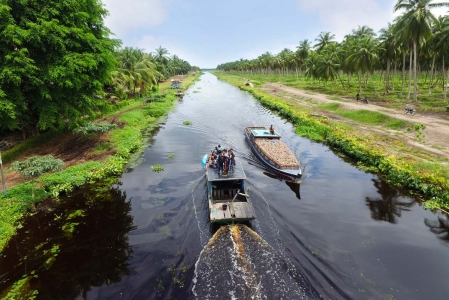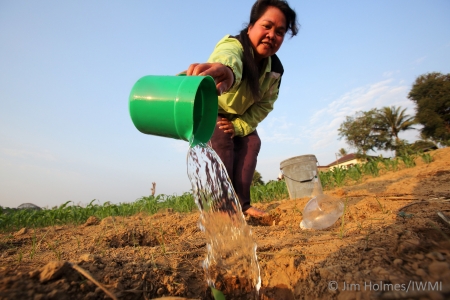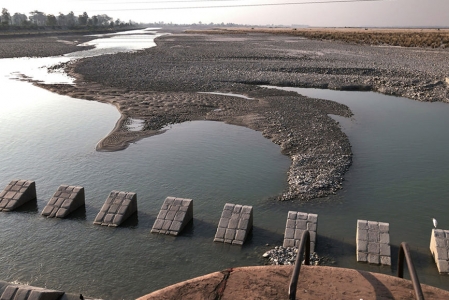Many people living outside of Laos might be surprised to learn that northern Laos experienced a banana-farming boom from 2009 through 2016. According to the National Agriculture and Forestry Research Institute (NAFRI), the area of farmland used for growing Cavendish bananas—the same variety that accounts for more than 90% of banana exports worldwide—tripled from 13,599 to 41,529 hectares during this time. In the late stages of the banana boom from 2013 to 2016, Cavendish banana exports increased in value from $61.5 million to $197.8 million.
At the same time, national media reported that intensive pesticide usage on banana farms was causing environmental and health degradation. One story outlined how the chemicals had killed fish in a nearby pond; another talked about how banana farm workers had become ill after spraying pesticides.
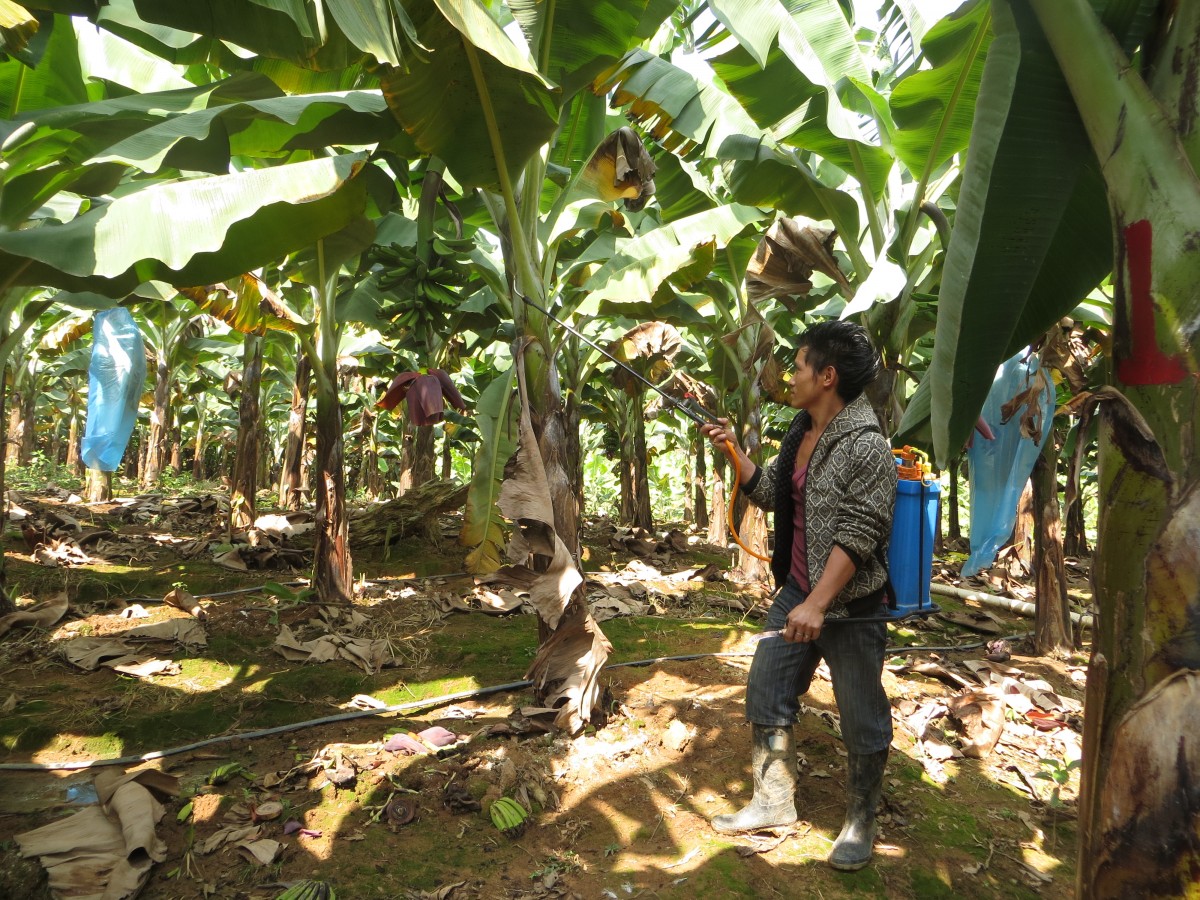
In 2016, I was part of a team of researchers working with the Government of Laos’ Ministry of Agriculture and Forestry (MAF) to find out what environmental and social impacts this booming banana industry was having. We worked with both non-governmental and governmental organizations to carry out a socioeconomic and environmental assessment, an arrangement that demonstrated how these kinds of partnerships can bridge the gap between policy and science.
The research teams included collaborators from multiple organizations to address the interdisciplinary nature of the problem. Staff from NAFRI investigated relevant socioeconomic issues, while scientists from the International Water Management Institute (IWMI) – which included myself – and the National University of Laos (NUOL) Department of Chemistry studied environmental risks from pesticide usage.
In early 2016, IWMI researchers accompanied the NAFRI team to conduct interviews and field visits in three banana-growing provinces in Northern Laos: Luang Namtha, Phongsaly, and Oudomxay. The IWMI and NUOL team returned twice in 2016 to a single focal site in Oudomxay province to collect environmental samples and observe farming practices.
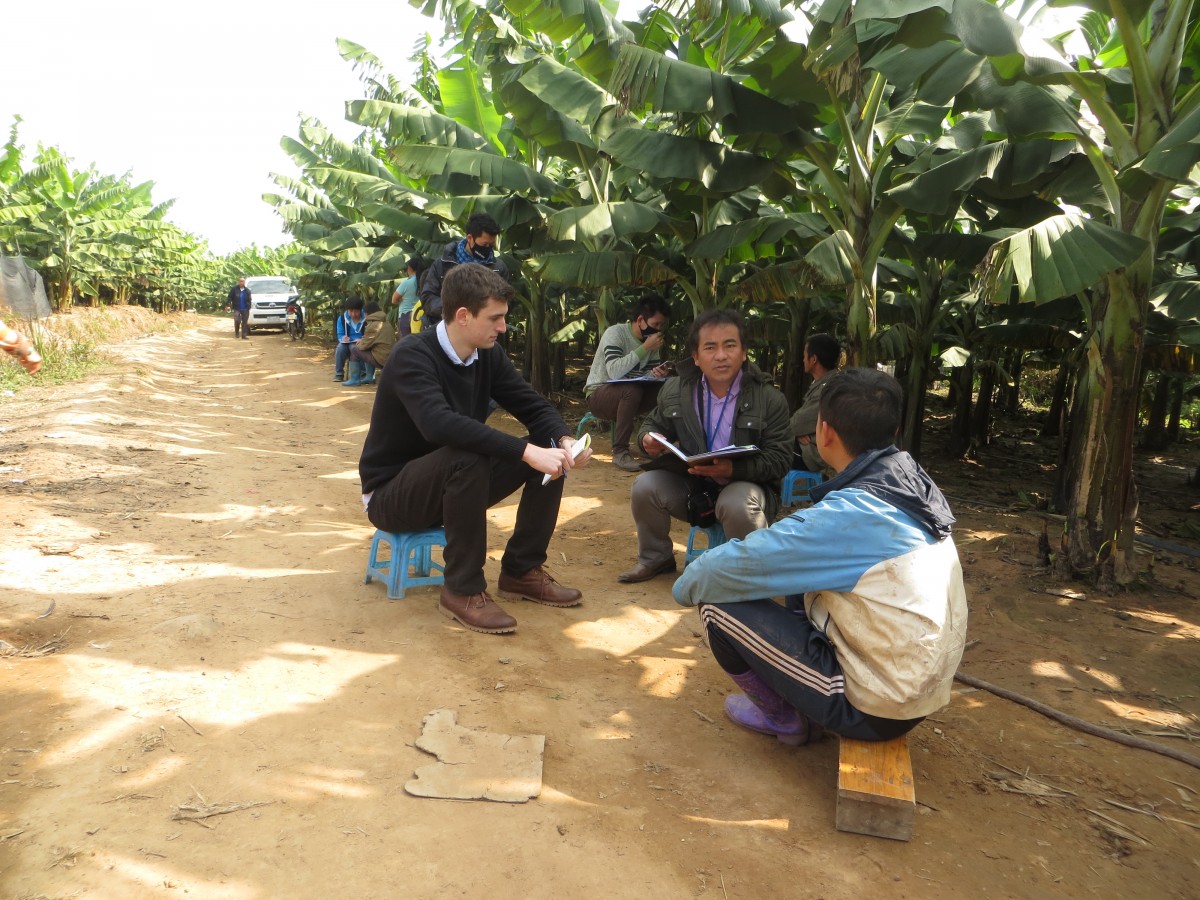
Our laboratory analysis of soil and water samples revealed a stark contrast between samples from banana farms and other crop types. Residues from pesticides observed in use, including chlorpyrifos, paraquat, and imidacloprid, were detected in banana farm samples with higher frequency and in greater concentrations than adjacent farms producing maize, rubber, upland rice and gourd. We also detected residues from highly persistent organochlorine (OC) pesticides that are no longer used in Lao PDR. These legacy pesticides included DDT, heptachlor, dieldrin, and lindane among others.
We found that the potential risk from pesticide residues in the study area was substantial. Concentrations of two currently used compounds, imidacloprid and paraquat, exceeded the amount recommended by the World Health Organization (WHO) water quality guidelines in wet season surface water samples from one banana farm. In addition, three OC pesticides (heptachlor, aldrin, and dieldrin) exceeded WHO water quality guidelines in dry season surface water and groundwater samples. These OC pesticides are highly persistent in the environment and tend to bioaccumulate, which means they become concentrated inside the bodies of living things. As such, they pose a considerable risk to people who consume contaminated groundwater or fish from local ponds.
This study, although modest in scope, represented an important initial step in collecting data to inform pesticide management in Lao PDR. Environmental monitoring of the major commercial banana growing areas is a very important means of assessing the levels of risk and identifying appropriate mitigation measures. An important step in achieving these goals is to provide appropriate training of provincial and local level staff in natural resources management and agriculture so that they can monitor and report on pesticide residues in accordance with international standards.
Adopting standardized Good Agricultural Practices (GAP) is another way to reduce the environmental risks from commercial banana farming and other plantations. GAP farming techniques include eliminating the most hazardous pesticides such as paraquat, reducing pesticide application when wet conditions favor offsite transport, and maintaining vegetated buffers and sediment traps around farms to detain farm runoff long enough for recently applied pesticides to degrade to safe levels.
From the beginning, our goal was to have a real impact on policy, and thanks to our collaboration with national research organizations like NAFRI and NUOL as part of a newly established MAF Policy Think Tank, we were successful. Shortly after we concluded the study and presented our findings to the Sub-Sector Working Group on Agro-biodiversity, the Ministry of Planning and Investment (MPI) announced it would draft new policy to improve plantation investment law. Members of the research team were invited to help draft the policy, and develop a business investment approval process that will ultimately lead to more responsible investments in plantations. It is unlikely that we would have had the buy in of MPI and other ministries responsible for setting agricultural policy without being part of a multi sector research team.
In addition to the draft law, MPI and MAF are discussing how the two ministries can collaborate further to comply with GAP. We hope that they take this work forward and that our experience conducting collaborative research will encourage others to consider similar engagement strategies in the future.







